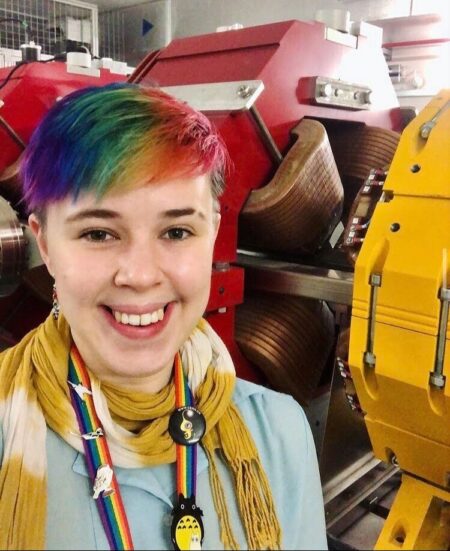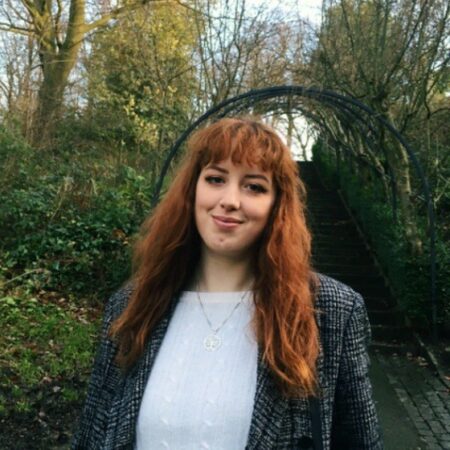One of the most wonderful parts of becoming an adult and entering the world of work is watching my friends do the same. I am a creative, and, as anyone who knows me will tell you, haven’t had a scientific thought since, quite literally, burning my biology textbook after my last ever exam in the subject at the age of sixteen! However, with more women and girls entering STEM than ever before, I get to watch the journeys of women in science through the eyes of my wonderful friends who are beginning their careers in a field I never would have dreamed of entering.
For today’s piece I have chosen to interview two close friends of mine: Hannah Jones and Emily Howling. Hannah and Emily have both been keen scientists since girlhood, and continue to inspire me on a regular basis through their journeys of entering their chosen fields of work within science. Although both Hannah and Emily are working within science, they both have very different roles. Hannah is a neuroscience graduate working doing market research within the healthcare industry. Her main job is researching the effects and experiences of autoimmunity treatment. Emily, on the other hand, is a physics student currently working in a year-long placement at the UK’s national synchrotron, developing a beam halo monitor (a camera device designed to check the positioning of electrons within a particle accelerator).
Knowing how interesting both Hannah and Emily’s work is, I used this interview as an opportunity to sit my good friends down and ask them any and all questions a girl keen on entering science might want to know.
My first question for Emily and Hannah was what it was that drew them to science in girlhood. Emily’s fascination with nature is visible to anyone who meets her: from her bright floral dresses, to her regular feeding of the ducks at her local park, to her small business making bee earrings. Emily told me this love of nature was evident in her from childhood. It began by consuming any nature documentaries that she could find. She was then drawn to chemistry and biology, to find how the nature she loved so much worked. When she craved an even deeper understanding of the universe, that is when she was finally drawn to physics. She says new discoveries are being made all the time in physics, that help her better understand and appreciate the world around her.
Hannah says, like Emily, she was drawn to science out of curiosity for the world around her. But rather than Emily’s fascination with nature, she describes her girlhood interests as more ‘inward’. Instead of nature, Hannah was interested in people, and filled with questions such as what makes different people ‘good’ and ‘bad’, and why they do the things they do. ‘Everyone has questions that they want answers to,’ Hannah tells me, ‘and what is science other than a way to answer all your questions?’ She told me that all the answers to her questions about people were answered by neuroscience. That’s how she knew it was the subject she wanted to dedicate her life to.
We then began discussing why it was important to include women and girls in science. Both Hannah and Emily believe that including women and girls in science is instrumental to scientific success. Emily’s first response to this discussion was with a quote from Sally Ride: ‘You cannot be what you cannot see’. If we don’t have lots of girls in science, how else are we going to encourage girls to pursue it? If women make up approximately half the population, then in excluding them, we exclude half the potential people who want to be scientists. ‘Female role models are for everyone’ she tells me, ‘both boys and girls should be able to have female role models within science!’ Because of a lack of girls in science, Emily told me she sometimes gets tired of feeling she has to ‘represent womankind’, and with more female role models, she would feel less pressure to be perfect.
Both Hannah and Emily tell me their paths to science haven’t been easy. They have both felt dissuaded from pursuing science in their lives. Hannah says at university, she struggled with self-doubt and imposter syndrome. She found herself shying away from brilliant opportunities, like work experience and PhD applications because she worried she simply wasn’t deserving of them. ‘I wish I had accepted that I did deserve those opportunities, and that sometimes, nobody really knows what they’re doing. Nobody should ever feel like they don’t deserve to be somewhere.’
Additionally, both Hannah and Emily identify as part of the LGBTQIA+ community. I asked them both whether they felt their identity affected them being seen as ‘serious scientists’. Hannah tells me ‘in the workplace, you’re expected to be professional. Professionalism is just adhering to conventions, and conventions are, unfortunately, heteronormative’; thus, although she never actively hides her queer identity, it feels unimportant to her to make it a part of her working life.
Emily’s take on this, however, was altogether quite different: although she sometimes worries about receiving judgmental remarks for her rainbow hair, she finds great comfort in her own self-acceptance. Science is done by scientists, and scientists are people!’ she tells me enthusiastically, ‘Science me is no different from person me. That’s why you should bring your whole self to work, and find other people like you!’
My final question for Emily and Hannah was what advice they had for girls who wanted to pursue science, like they have done. ‘Be yourself, and you will find your people.’ Emily tells me, ‘Remember, you don’t just have to be a scientist: embrace your power of “and”! You can be a scientist AND a girl AND an artist, and whatever else you like!’
Hannah’s advice is ‘if you love science, you already are a scientist. “Scientist” can mean whatever you want it to mean.’ She added ‘keep asking questions. That’s what science is all about. If the questions you want answering can’t be answered, then find the answer! There will always be someone out there to support you, and there will always be people who will help you find your answers.’
-Izzie Heis
Junior Girl
Girl Museum Inc.


